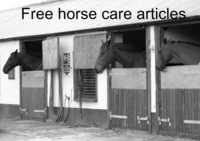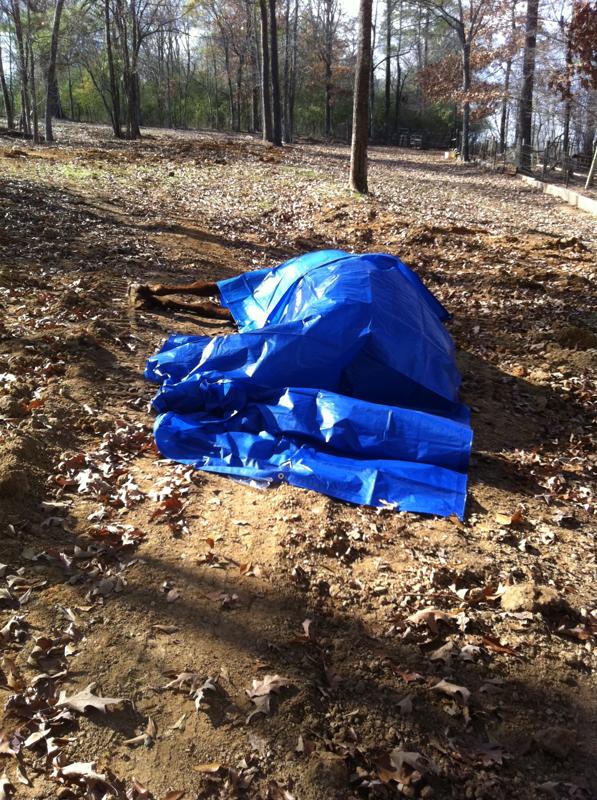First read the heartbreaking background story to the birth of this little foal, orginally published on the Louisiana Horse Rescue Association website:
"On January 6th Louisiana Horse Rescue Association received an email from the Sabine Parish Humane Society asking if we could assist in removing and housing approximately 60 horses they planned to seize from a Thoroughbred breeder in Many, Louisiana. LHRA agreed to take the horses and organize removal over the weekend of January 7th and 8th. LSU Veterinary School's Equine Response Team, indluding Dr. Mirza and two vet techs, met LHRA onsite on Saturday, January 7th to assess the situation. We were not prepared for what we found. On arrival, we were taken to a barn at the rear of the approximately 250 acre farm. The barn housed a group of two year old colts as well as a handful of horses of racing age. The horses were in deplorable condition. They were severely underweight, lethargic, and stood in stalls full of urine and manure that had not been cleaned in weeks. Their manes and forelocks were full of burs. One had a wound on his forehead and old, dried blood running down his face. Two of the horses showed mild colic signs and one had significant swelling along his abdomen and into his scrotum. There was a smell around the barn. It turned out to be three horse carcasses pushed into the woods just a short distance away. Dr Mirza evaluated each horse in the barn and we moved on to the Broodmare pasture. There we found horses on the ground too weak to get up, a geldng with severe colic (who was later euthanized), carcasses of horses who had recently died, and aborted fetuses from the broodmares so undernourished they couldn't carry their foals to term. The field was scattered with bones from horses, goats, and dogs. The body condition scores for these mares averaged 1.5. Fresh graves of horses the owner had burried were found along the back of the pasture. I counted seven graves in that one pasture.
Dr. Mirza asked that I purchase tarps to cover the carcasses of the horses in that pasture. I drove to town to get as many tarps as I could find. I will never forget walking through that pasture placing tarps over those majestic beasts. I had to lift their legs and heads to secure the tarps from flying off. It was a gorgeous day, uncommon for this time of year, and all around us were natures gifts - birds, geese, trees rustling in the light breeze. It was peaceful out there, and I covered the horses quietly. I recall thinking what a stark contradiction it was - such hideuos abuse in such a gorgeous setting."
"Most of the day was spent photographing and examining each broodmare to determine which were in foal, what their immediate needs were and to record their markings and tatoo numbers to help identify them later. It was mid-afternoon when we drove the truck and LSU minivan down into the last pasture. Here we found an oddly mixed herd of older ex-racehorses, two year old fillies, and a group of yearlings. Three of the yearlings were literally shooting water out of their backsides. I've never seen such terrible diarhea. Many of the yearlings were compromised conformationally due to malnutrition. We wondered if they were worth salavaging at all - even if they lived, they would be difficult to place given their permanent issues. Dr. Mirza was concerned about disease with this pasture, and wanted to get the seven yearlings into a sheltered and confined area where they could be monitored and treated immediately. Dr. Mirza and his team, along with volunteers who had brought good hay from Lafayette (Lora Pitre and her crew), and Donna Keen herded the seven yearlings into a stock trailer. This was no easy task and we have to commend everyone involved for their efforts in that task.
It was sometime after nightfall that we decided to call it a day. The seven yearlings were safely in the barn area, yet far enough from the other horses not to be an immediate threat. We had completed the removal of five healthy horses including four that were transported by Sunshine Horses Second Chance Rescue of Mississippi and one, tiny 'Hope', who was taken to a local volunteer's residence. 'Hope' is an extremely undersized yearling who we all fell in love with immediately. We wanted to get her to safety, away from anything contagious. Two additional racing age horses were removed by a custodian assigned by the Humane Society, so a total of 7 horses left the property on Saturday. Dr. Mirza gathered the group outside of the barn on Saturday night and made a plan for Sunday.
Sunday brought a cooler day, but just as beautiful. Dr. Mirza had brought a larger team with him and work began immediately on a mare who had not done well through the night. This mare, Cayla's Playmate, was later euthanized despite the best efforts of the LSU team to save her. Transport trucks arrived bright and early and the first load of horses left for Alexandria - all broodmares. Teams worked throughout the day to pull coggins, herd horses from the final pasture, photograph and identify and finally load horses for transport to either Alexandria (broodmares), Folsom (young horses), or Lafayette (three stallions). The Sabine Parish Humane Society decided to retain custody of the 13 horses in the original barn area. LHRA removed everyone else, including 7 critical yearlings who went to Michelle Rodriguez' personal home."
And now the story of Jewel as told by Sunny, spokesperson of the Louisiana Horse Rescue Association
"Here’s a little background on Baby Jewel.
The mare pasture on Charles Ford’s farm in Many was the saddest place I have ever been. There were bones scattered about – some clearly had been there a long time, others very new. There were two carcasses in the field, about twenty head of mares (two turned out to be geldings). A couple of horses laid down colicking as we were there – two were euthanized onsite. There were fresh graves in the back, and further down into the creek, where I did not go, there was reportedly a dumping ground for more. The most heartbreaking thing we saw was a newly aborted fetus. It was chestnut with three long white stockings and a fluffy white tail. The rest you could not make out – the vultures had done their job, but the tiny little legs and that stark white tail were flawless, and the thought of them brings tears to my eyes now. There was another aborted fetus -a week or two older, just a pile of bones by this time. The mares, so starved and weak, had aborted their babies around that field. All but one mare.
It was rumored that some of the horses in the herd were jointy owned and so it was important for us to identify the mares. As we identified the vets examined each one, and palpated those they thought may be in foal. At the end of the very long weekend, only one mare was pronounced in foal. With so much uncertainty around the horse’s general health, it was decided the mares would go to a quarantine pasture in Alexandria. This mare so close to foaling though would need close supervision. She was transported to a large mare care farm in Folsom, where she could be watched night and day. She turns out to be the only mare we have not been able to identify. This mare is bay with a white sock on her right hind and white star. She does not have a lip tattoo but she’s clearly a Thoroughbred. We have no idea who the sire is."
"Late last night ‘Unknown Bay Mare’ delivered her foal. She did so on a gorgeous clear night, quietly observed by the staff at the farm. She was brought into a beautiful foaling stall full of clean straw, and given plenty of hay and fresh water. The foal weighed about forty pounds, less than half the size of a normal TB foal. The farm manager named her ‘Jewel’ immediately. Jewel took about three hours to stand on her own, and was ready to nurse within five hours (slow progress). Her dam, although a good mother, did not produce milk at first, depriving Jewel of vital nutrients. The farm acted quickly and Jewel was tube fed for that first night and all day Wednesday. By Wednesday afternoon the mare’s milk had begun to come in and Jewel was ready to receive it. When I visited at three o’clock today she had a bit of a tummy ache, was wearing a pink doggie blanket donated by the farm manager’s daughter, and had stolen everyone’s heart. Jewel’s prognosis is good, although she’s not completely out of the woods. She has a hind limb deformity caused by malnutrition – we saw it in some of the yearlings. The hind fetlock is enlarged and pushed forward. With proper nutrition from this point forward it could improve. She is able to walk normally and other than being tiny is absolutely gorgeous.
Baby Jewel’s medical needs, along with the three yearlings that survived (three of seven), are mounting. She may require specialized treatment to correct her hind fetlock. She will continue to be tube fed to supplement her dam’s milk until the vet says otherwise. She is going through straw, man hours, and vet care faster than a full grown horse!!"
Obviously Louisiana Horse Rescue Association require funds to help raise Jewel if you'd like to help you can donate directly at their website or donate to the Horse and Man Febuary Bucket Fund which is for The Many.








Comments